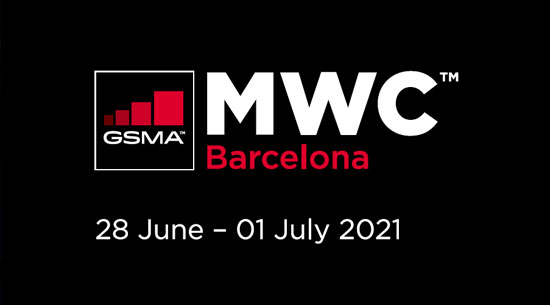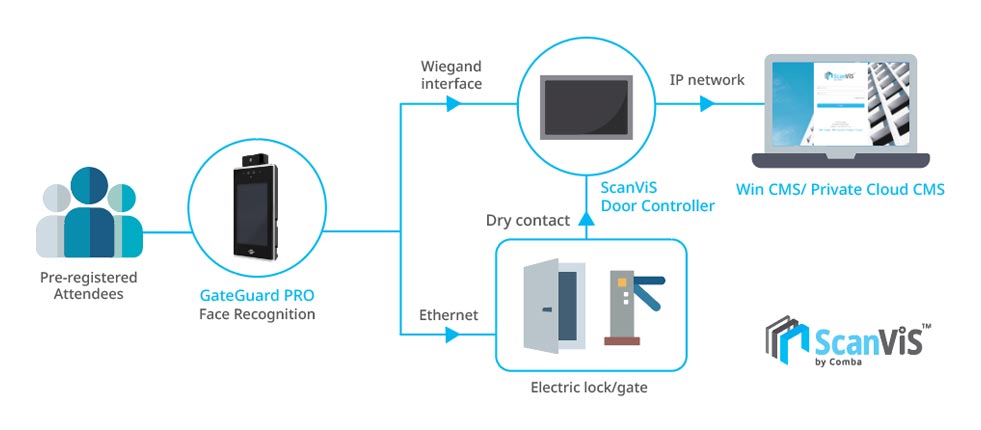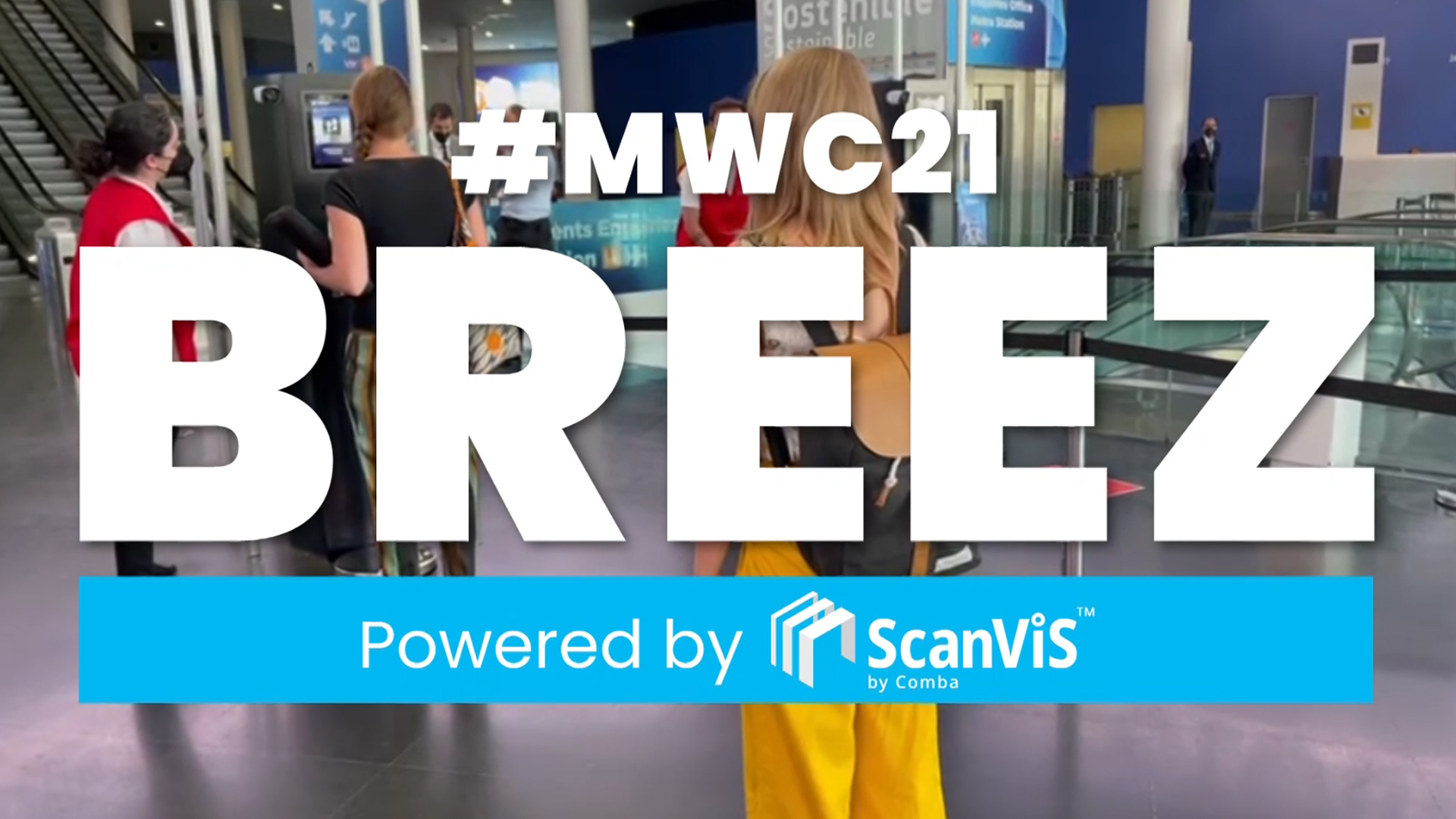ScanViS
MWC21: Enabling Fast & Touchless Entry with BREEZ
- Details
- Written by ScanViS
- Category: News Update
- Hits: 2007
- Thumbnail:

- Event Description:
ScanViS has deployed a fast and efficient event check-in system using a safe and reliable facial recognition technology to enhance the entry experience for the attendees of MWC21 this year.
- Description: Selected by GSMA – the global mobile industry event organizer, ScanViS will be deploying a fast and efficient event check-in system using a safe and reliable facial recognition technology to enhance the entry experience for the attendees of MWC21 this year.
- News Icon: Hide
MWC21: Enabling Fast & Touchless Entry with BREEZ
Powered by ScanViS by Comba Telecom
Selected by GSMA – the global mobile industry event organizer, ScanViS has deployed a fast and efficient event check-in system using a safe and reliable facial recognition technology to enhance the entry experience for the attendees of MWC21 this year.
Faster identity checks and access control with BREEZ
BREEZ is part of the MWC event registration system created by the GSMA, and is designed to provide ID verification for attendees before arriving at the venue. Leveraging ScanViS facial recognition technology, it offers a faster and reliable way to check visitor ID instantly and also enhances the onsite experience with touch-free access.

With such a large volume of attendees, it is crucial to speed up the visitor entry process. ScanViS GateGuard PRO verifies face ID within 0.3 seconds at the same time processes mask and liveness detections, significantly easing people traffic during peak hours yet ensuring health safety and venue security.
Easier registration process - how to enroll in BREEZ?
1. Upload ID with your passport/ EU national ID card
2. Upload a photo
3. Verification
4. Easy, touchless access at BREEZ lanes
After opting into BREEZ, attendees will need to take a photo via ScanViS Facial Recognition System to create a BREEZ profile. By comparing the uploaded photo with passport/ EU national ID card photo, our system will check the personnel’s identity through a quality verification (QV). Once the registration has been completed, attendees will benefit from a convenient and touchless entry experience.
Secure venue access control
ScanViS’s leading facial recognition technology offers a more secure authentication method by transforming attendees' biometric features into encoded unique datasets. All access logs and visitor databases are encrypted and stored on a local server isolated from the public network to safeguard against data breaches.
Learn more about ScanViS MWC21 BREEZ deployment.
Learn more about ScanViS access control solution.
Download our latest GateGuard Brochure.
Automated Attendance System with GateGuard (Use Case in Portugal)
- Details
- Written by esther.kwong
- Category: News Update
- Hits: 2619
- Thumbnail:

- Event Description:
A well-known cleaning service provider in Portugal selected ScanViS GateGuard Series to automate their attendance system with facial recognition technology and benefit from cloud efficiencies.
- Description: Manual payroll processes are often a pain for both HR and Finance teams. How to make attendance management easy with GateGuard?
- News Icon: Hide
Automated Attendance System with GateGuard
Use Case of a Cleaning Service Provider in Portugal
Manual payroll processes are often a pain for both HR and Finance teams. An automated payroll system allows HR or admin to handle payroll operations smoothly with system-generated reports. How to make attendance management easy with GateGuard?
Recently, a well-known cleaning service provider in Portugal selected ScanViS GateGuard Series to automate their attendance system with facial recognition technology and benefit from cloud efficiencies.
Client Challenges
- Difficulty in tracking a large number of staff with various rosters
- Manual payroll processes are time-consuming
- Demanding to generate a real-time alert for any attendance anomalies
Smart HR Attendance Solution
Results and Benefits
- Eliminate manual document processes
- Easy real-time tracking
- Scalable, convenient attendance management
- Fast, accurate check-in for workers
For full story, download our case study brochure!
MWC Barcelona 2021 Touchless Access Control Solution - BREEZ
- Details
- Written by esther.kwong
- Category: Event
- Hits: 1863
- Thumbnail:

- Event Description:
GSMA looked for frictionless and secure venue access to improve attendees’ entry experience at Mobile World Congress 2021 in Barcelona. ScanViS has deployed a fast and efficient event check-in system using a safe and reliable facial recognition technology during MWC21.
- News Icon: Hide
- Article Link: Show
MWC Barcelona 2021 Touchless Access Control Solution - BREEZ
GSMA, the global mobile industry event organizer, looked for frictionless and secure venue access to improve attendees’ entry experience at Mobile World Congress 2021 in Barcelona. The GSMA created the BREEZ experience to provide an end-to-end secure registration and access solution with ScanViS. ScanViS has deployed a fast and efficient event check-in system using a safe and reliable facial recognition technology during MWC21.
Results and Benefits
Faster identity checks and seamless venue access
With such a large volume of attendees, it is crucial to speed up the visitor entry process. ScanViS GateGuard PRO verifies face ID within 0.3 seconds at the same time processes mask and liveness detections, significantly easing people traffic during peak hours yet ensuring health safety and venue security.
Hands-free, hygienic experience for attendees
The whole verification process is completed by the ScanViS devices and is touch-free to avoid unnecessary physical contacts between humans and machines, which significantly mitigates the risk of cross-infection and secures a healthy and hygienic experience for the attendees.
Security-focused entry management
ScanViS’s leading facial recognition technology offers a more secure authentication method by transforming attendees' biometric features into encoded unique datasets. All access logs and visitor databases are encrypted and stored on a local server isolated from the public network to safeguard against data breaches.
For full story, download our case study brochure!
Tackling physical security threats in the laboratory environment
- Details
- Written by ScanViS Team
- Category: Blog
- Hits: 1615
Laboratories, by the nature of the activities they undertake, can face various security threats and be the target for unwanted attention from various groups. The range of threats faced, for instance, physical attacks, theft of intellectual property, and unauthorized disclosure of sensitive information will be based upon the laboratory functions and assets.
However, doors allow easy unauthorized access through tailgating and increasingly a form of turnstile is being utilized, particularly where a high footfall is likely to occur, such as on main staff entrances. Whatever portal chosen, the locking device should be compatible and maybe an electromagnetic lock, electric strike/deadbolt, etc.
To counter the threats faced, laboratories will require robust security management arrangements, including effective access management to control who can go where and when within the laboratory facilities.
An effective entry management system must be supported by an automated access control system with several key components.
- The credential that enables access (access card, personal identity number (PIN), biometric attribute).
- The reading device (card reader, keypad, or biometric scanner).
- The portal and locking hardware (such as a door or turnstile).
- The controller that enables the operation of the system to defined rules.
- The database that holds user information (such as authorization profile).
The grading of the access control system entry points will significantly influence the necessary components required. For example, if the security level is deemed to be at medium to high risk, this requires an online system using two-factor authentication or single-factor biometric with events being received “real-time on the monitoring software”.
A credential (i.e. means of authentication) is “a physical or tangible object, piece of knowledge or a facet of a person’s physical being that enables an individual to gain access to a controlled area”. More succinctly, this is:
- something we know such as a PIN
- something we have such as a token or card
- something we are such as a biometric measure
In a laboratory environment, the credential(s) would need to be used with a reading device that requires, for example, both use of a card (e.g. swipe or proximity) and PIN being entered into the reading device in a system of certain security level, for instance, Grade 1 is for standard level of security while Grade 3 is of high-security level. Similarly, if doors are the preferred portal, the grade will influence the type of door material to be used, such as, with Grade 3 requiring solid hardwood.
Another factor to consider is the issue regarding visitors and the use of temporary access approval. Biometrics authentication helps when staff and temporary visitors needed to be separated into two user groups with assigned permission time for entry to the facilities.
Page 3 of 16

